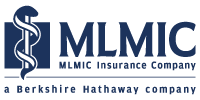
MLMIC's Proactive Risk Management Program 1
This course is designed to provide continuing medical education (CME) for physicians participating in MLMIC’s Proactive Risk Management Program. It contains subject matter that is of current interest to physicians in all medical specialties. The intended outcome of this educational program is to help physicians and other healthcare providers improve the quality of patient care and reduce potential liability exposure in their practices.
This course must be completed within 60 days.
Target Audience
The target audience for this program also includes dentists and other non-physician healthcare providers including mid-level practitioners and medical office staff.
Learning Objectives
As a result of completing these modules, participants should be able to:
Module 1 - In Your Defense
- Describe the risk of “finger pointing” between defendants in a malpractice case.
- Explain the role of the subsequent treating physician as a non-party witness in a malpractice case.
- Describe the steps taken by defense counsel to prepare the defendant physician for a deposition.
- Recognize the negative impact of an altered medical record on a malpractice case.
- Review the effects and challenges of using electronic health records (EHRs) in a medical malpractice case.
Module 2 - Electronic Health Records (EHRs) in the Office Practice - Part 1
- Describe appropriate ways to improve documentation in the EHR.
- Explain EHR metadata and its use in medical malpractice litigation.
- Minimize the liability risks associated with the copy and paste function.
- Identify potential problem areas when communicating with patients by email.
- Recognize the benefits of using patient portals in an EHR system.
Module 3 - Electronic Health Records (EHRs) in the Office Practice - Part 2
- Explain the benefits and associated liability risks of using clinical decision support software.
- Develop a plan to manage patient information in the event of an EHR system failure.
- Describe ways to enhance patient engagement when using an EHR system in the examination room.
- Explain the elements of informed consent and the proper way to document this process in the EHR.
- Review steps that should be taken to secure patient information in the EHR.
Module 4 - Follow-Up Procedures in the Office Practice
- Develop procedures for tracking and following up patient appointments, diagnostic tests results and consultation reports.
- Recognize the liability risks of treating noncompliant patients and develop strategies to minimize these risks and improve patient compliance.
- Evaluate the role of the coordinating physician when multiple practitioners are involved in a patient’s care and treatment.
- Describe situations where it is appropriate to discharge a patient from the practice and the steps that should be taken to properly do so.
- Review strategies to manage patients that forgo care and treatment due to costs.
Module 5 - High Exposure Liability: A Case Study Analysis - Part 1
- Explain how the failure to conduct and/or document an adequate initial history and physical examination can lead to diagnostic errors and treatment delays.
- Describe the impact of inadequate medical record documentation on the defense of a high exposure liability case.
- Discuss the potential liability issues for physicians who use and delegate responsibilities to mid-level providers.
- Recognize the impact of communication failures or ineffective patient handoffs on patient safety, especially during critical situations.
- Identify the potential liability risks when inpatients are boarded in the Emergency Department.
Module 6 - High Exposure Liability: A Case Study Analysis - Part 2
- List the key elements that should be communicated and documented to establish a clear transition in care between a referring and consulting physician.
- Describe how an inadequate transition in care from one provider to another can result in a poor patient outcome and malpractice case.
- Explain the proper use of addenda in the medical record.
- Discuss the impact of finger-pointing between physicians on the defense of a case.
- Explain the importance of a physician being well-prepared to testify at the trial.
Additional Information
| Attachment | Size |
|---|---|
| 4.37 MB |
This proactive risk management program is offered every year to MLMIC-insured policyholders who have not yet completed a basic risk management course. Satisfactory completion of this course enables physician to receive the applicable insurance premium credit and/or qualify for participation in New York state's excess medical malpractice program, for two successive policy years, pursuant to NYSDFS Regulation 124. In this course a prominent defense attorney shares his knowledge and experience in handling medical malpractice cases against physicians. The program also addresses he use and benefits of the electronic health records (EHRs) in the office practice, and the associated liability risks. A risk management consultant, a physician expert, and an attorney specializing in healthcare law discuss the importance of patient follow-up in the office practice, and how the failure to todo so can impact patient care and result in claims against physicians. Lastly, the issues and risks associated with high exposure liability claims are reviewed through a case study presentation.
Module 1 - In Your Defense
John Lyddane, Esq.
Senior Partner and Trial Attorney
Martin, Clearwater & Bell LLC
www.mcblaw.com
212-916-0950
lyddaj@mcblaw.com
Mr. Lyddane has no relevant financial relationships to disclose.
Mark Ambrose
Risk Management Consultant, MLMIC
Mr. Ambrose has no relevant financial relationships to disclose.
Modules 2 and 3 - Electronic Health Records (EHRs) in the Office Practice - Parts 1 and 2
Salvatore Volpe, MD
MLMIC Risk Management Consultant, Internal Medicine, Geriatrics and Pediatrics
Dr. Volpe has no relevant financial relationships to disclose.
Joshua R. Cohen, Esq.
Senior Partner
Decorato Cohen Sheehan & Federico LLP
212-742-8700
cohen@dcsf.com
Mr. Cohen has no relevant financial relationships to disclose.
Martin Kaiser, CPHQ
Risk Management Consultant, MLMIC
Mr. Kaiser has no relevant financial relationships to disclose.
Module 4 - Follow-Up Procedures in the Office Practice
Kira Geraci-Ciardullo, MD
MLMIC Risk Management Consultant, Pediatrics and Allergy/Immunology
Dr. Geraci-Ciardullo has no relevant financial relationships to disclose.
Donnaline Richman, Esq.
Fager Amsler Keller & Schoppmann, LLP
Ms. Richman has no relevant financial relationships to disclose.
Martin Kaiser, CPHQ
Risk Management Consultant, MLMIC
Mr. Kaiser has no relevant financial relationships to disclose.
Modules 5 and 6 - High Exposure Liability: A Case Study Analysis - Parts 1 and 2
Donald J. Pinals, MD
MLMIC Risk Management Consultant, Radiology
Dr. Pinals has no relevant financial relationships to disclose.
Peter Lichtenfeld, MD
MLMIC Risk Management Consultant, Neurology
Dr. Lichtenfeld has no relevant financial relationships to disclose.
Michael Marin, MD
MLMIC Risk Management Consultant, Emergency Medicine
Dr. Marin has no relevant financial relationships to disclose.
Bill Vaslas, Esq.
Vaslas Lepowsky Hauss & Danke LLP
(T) 718-761-9300 (E) BVaslas@vlhd-law.com
Mr. Vaslas has no relevant financial relationships to disclose.
Disclosure Policy Statement
MLMIC relies upon planners and faculty participants in its CME activities to provide educational information that is objective and free of bias. In this spirit and in accordance with the guidelines of MSSNY and the ACCME, all speakers and planners for CME activities must disclose any relevant financial relationships with commercial interests whose products, devices or services may be discussed in the content of a CME activity, that might be perceived as a real or apparent conflict of interest. Any discussion of investigational or unlabeled uses of a product will be identified.
CME Accreditation and Designation Statement
MLMIC is accredited by the Medical Society of the State of New York (MSSNY) MLMIC is accredited by the Medical Society of the State of New York (MSSNY) to provide CME for physicians.
MLMIC designates this internet-based enduring material educational activity for a maximum of 9.0 AMA PRA Category 1 Credits™. Physicians should claim only the credit commensurate with the extent of their participation in the activity.
New York State Dental Association
MLMIC is sanctioned by the New York State Dental Association (NYSDA) as an approved provider of dental education in New York State. The Company designates this educational activity for a maximum of 9.0 continuing education lecture credits. Dentists should only claim credit commensurate with the extent of their participation in the activity.
American Board of Internal Medicine MOC Statement
Successful completion of this CME activity, which includes participation in the evaluation component, enables the participant to earn up to 9.0 MOC points in the American Board of Internal Medicine’s (ABIM) Maintenance of Certification program. Participants will earn MOC points equivalent to the amount of CME credits claimed for the activity. It is the CME activity provider’s responsibility to submit participant completion information to ACCME for the purpose of granting ABIM MOC credit.
American Board of Pediatrics MOC Statement
Successful completion of this CME activity, which includes participation in the activity, with individual assessments of the participant and feedback to the participant, enables the participant to earn 9.0 MOC points in the American Board of Pediatrics’ (ABP) Maintenance of Certification (MOC) program. It is the CME activity provider’s responsibility to submit participant completion information to ACCME for the purpose of granting ABP MOC credit.
American Board of Otolaryngology - Head and Neck Surgery (ABOHNS) Continuous Certification Recognition Statement
Successful completion of this CME activity, which includes participation in the evaluation component, enables the participant to earn their required annual part II self-assessment credit in the American Board of Otolaryngology – Head and Neck Surgery’s Continuing Certification program (formerly known as MOC). It is the CME activity provider's responsibility to submit participant completion information to ACCME for the purpose of recognizing participation.
American Board of Surgery (ABS) Continuous Certification Recognition Statement
Successful completion of this CME activity, which includes participation in the evaluation component, enables the learner to earn credit toward the CME and Self-Assessment requirements of the American Board of Surgery’s Continuous Certification program. It is the CME activity provider’s responsibility to submit learner completion information to ACCME for the purpose of granting ABS credit.
Available Credit
- 9.00 AMA PRA Category 1 Credit™ Regulation 124 Course
MLMIC Insurance Company is accredited by the Medical Society of the State of New York (MSSNY) to provide continuing medical education for physicians.
MLMIC Insurance Company designates this enduring material CME activity for a maximum of 9.00 AMA PRA Category 1 Credit™ Regulation 124 Course. Physicians should claim only the credit commensurate with the extent of their participation in the activity.
This program qualifies physicians for a risk management premium credit, if applicable, and satisfies the requirements for eligibility in the excess medical malpractice insurance program, pursuant to New York State Department of Financial Services Regulation 124.
- 9.00 MLMIC Participation Credit
Price
To register, please click on "Register" then click on "Take Course", you must complete all sections of this course in the order they are presented to earn credit.
Required Hardware/software
For the best learning experience please use the latest version of one of the following internet browsers:
- Google Chrome
- Apple Safari
- Microsoft Edge

 Facebook
Facebook Twitter
Twitter LinkedIn
LinkedIn Forward
Forward